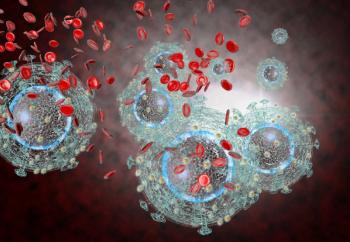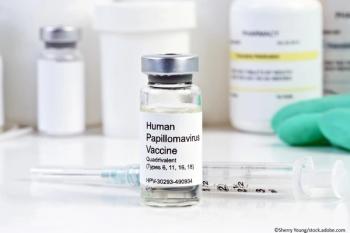
Vitamin D + Calcium Reduce Bone Loss from ART
Vitamin D and calcium supplementation is a low-cost, well-tolerated intervention to prevent ART-related bone loss, according to a new study.
For the first time, researchers have successfully intervened to attenuate bone loss associated with antiretroviral therapy (ART) initiation and shown that vitamin D and calcium supplementation promotes bone health in those infected with HIV.
People with HIV who take ART can reduce antiretroviral therapy-related bone loss by 50% by taking daily high-dose vitamin D and calcium supplements, according to a 48-week, prospective, randomized, double-blind, placebo-controlled study.
As the HIV-infected population continues to live longer due to effective ART, osteopenia and osteoporosis are becoming more common metabolic complications. Lifestyle and hormonal factors prevalent in HIV-infected patients may increase the risk of bone disorders, including physical inactivity, suboptimal intake of calcium and vitamin D, cigarette smoking, alcohol and opiate use, depression, and low testosterone levels.
ART for HIV-1 infection is also associated with a 2% to 6% loss of bone mineral density (BMD), noted lead author Edgar T. Overton, MD, from the University of Alabama School of Medicine in Birmingham, AL, and colleagues in an article
The researchers recruited 165 patients with HIV who had not yet received ART. As they began ART, the researchers randomly assigned 79 patients to receive 4000 IU of vitamin D3 and 1000 mg of calcium daily and 86 patients to placebos. The study groups were well-balanced at baseline; 90% of the patients were men, and one-third were non-Hispanic black, 37% were non-Hispanic white, and one-quarter were Hispanic.
At 48 weeks, the percentage of decline in total hip BMD, measured by dual-energy x-ray absorptiometry, was smaller in the vitamin D3 plus calcium group than in the placebo group. Similar results were seen at the lumbar spine.
“Supplementation with high-dose vitamin D3 (4000 IU) and calcium carbonate (1000 mg) with ART initiation increased 25-(OH)D levels and attenuated increases in bone turnover markers and bone loss at the hip and lumbar spine by approximately 50% at 48 weeks," they wrote.
At 48 weeks, 90% of patients achieved HIV-1 RNA levels less than 50 copies/mL.
Overall, about two-thirds of patients reported 1 or more adverse event, with similar distribution between groups. No cases of hypercalcemia were reported, and 1 case of nephrolithiasis was reported in the placebo group.
In conclusion, the researchers wrote that “vitamin D3 plus calcium supplementation mitigates the BMD loss seen with initiation of efavirenz/emtricitabine/tenofovir disoproxil fumarate.” They noted that it is unclear whether these results apply to other ART regimens.
"Vitamin D and calcium supplementation is a low-cost, well-tolerated intervention to prevent ART-related bone loss," the authors wrote. "Future studies will examine alternative vitamin D doses, effects when used with other ART regimens and in international settings, and longer-term efficacy."
Newsletter
Enhance your clinical practice with the Patient Care newsletter, offering the latest evidence-based guidelines, diagnostic insights, and treatment strategies for primary care physicians.










































































































































































































































































































